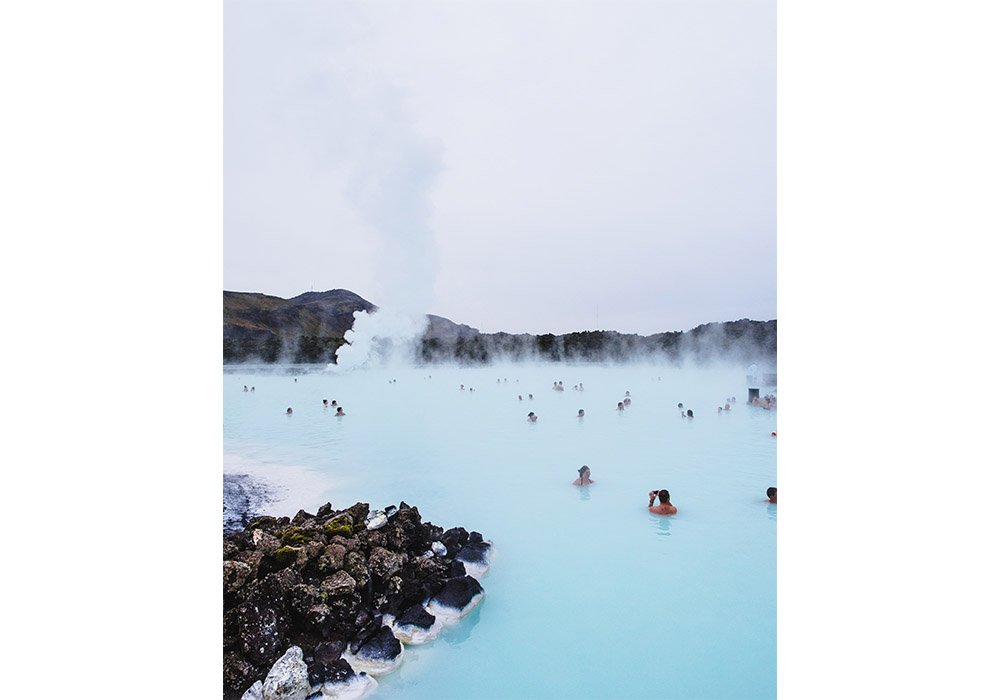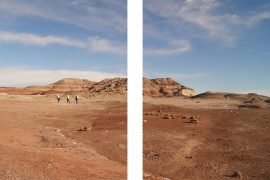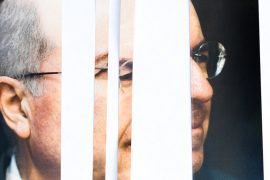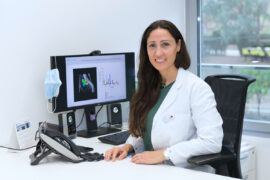[dropcap letter=”A”]
s the plane approaches Iceland and is about to land, the eyes of the visitor are amazed. At the beginning of the month of March, great inhospitable extensions -like a desert of salt- that surround the airport of Keflavík make you feel as if you were on the verge of putting the feet to the moon. The eyes strive to portray and recognize the insinuations of toy craters cracked by the volcanic earth, the particular texture that shows the Icelandic land from the plane. This “Neil Armstrong impression”, that of being the first who steps on the prodigy, will no longer abandon the observer.
Obviously, in Reykjavík, the European capital which is closest to the arctic polar circle, it is very easy to become aware of the tourist boom that is experienced in both the city and the whole island in general. It is true that now the cranes and the new hotel buildings emerge in the maritime horizon. As true as the prices of almost everything -except for public swimming pools with geothermal water- rise up to the stratosphere, and that the rumor of the luggage up and down -including ours- is part of the soundtrack of the landscape All this is as true, and it must be even more for those who can say how was Reykjavík like before the tourist boom, or before the financial crash, or before the eruption of the Eyjafjalla volcano, which left the European airspace full of smoke. Now the race is infinite to be the first explorer-tourist and spend for that a frightful amount. But the fact is that there are ways to get away from the moon-bubble that you enter the moment you put your first foot in Reykjavík, like the one who tastes the water temperature of a hot water pool.
The city makes everything easy. Dimensions are very acceptable. Walking you will reach almost everywhere. Without even noticing it, you can stand on the airport runway that is near the city. Something like running into a flock of sheep in the very city. By the way, speaking about sheep: they are the national animal -both on the landscape and as a dish- along with horses with furry legs. There are more sheep than Icelanders. Specifically, almost the double: about 600,000 for about 338,000 bipedal inhabitants. As for sheep, in Reykjavík, they are actually not seen, but there is a flourishing of stores with wool jerseys with prohibitive prices. Beyond the fetishism of each one in front of these sweaters -really beautiful-, you do not have to suffer much from the cold. Although, as a prototypical Mediterranean, if you announce that in March you will go to Reykjavík, everybody asks you about temperature and light. As a matter of fact, their island conditions -the influence of the ocean- make it different from the cities of the Nordic countries. In March, temperatures are just three to four degrees below zero, they do not vary greatly and the light, at this precise moment of the year, is more or less the same as here. As for the wind, when it blows, that is quite something.
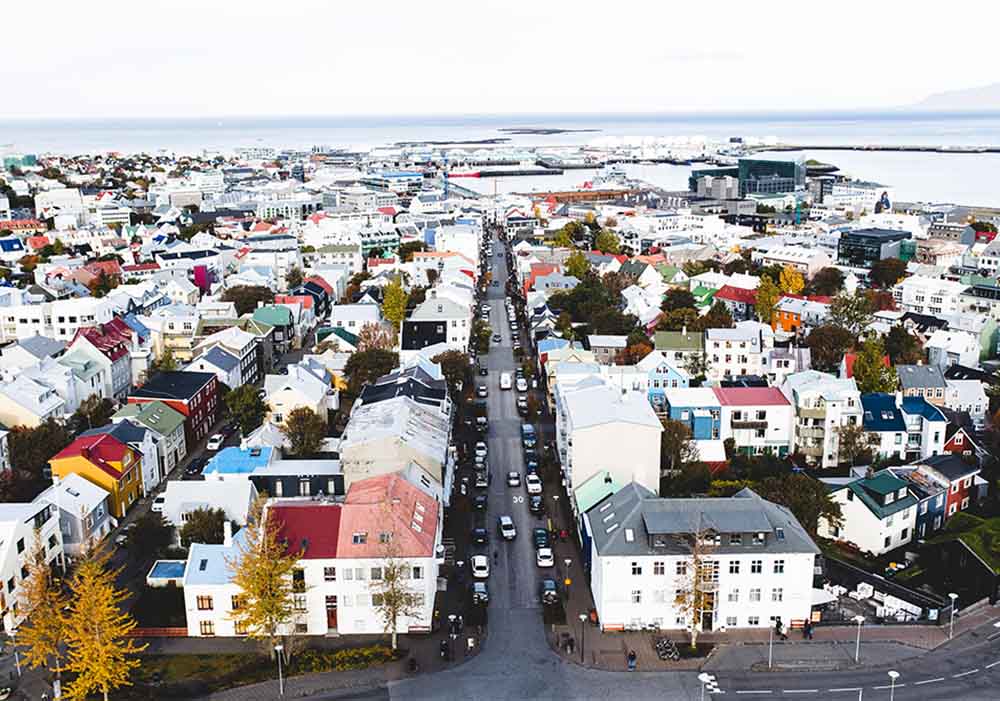
The inhabitants of Reykjavík like to say that it is like a ‘Western’ city, because it is almost a city of township horizontality, with houses in line and few blocks of apartments, although this changes somewhat at the suburbs. It is a continuum, the only variation are the undulations of the neighborhoods -one up, one downwards- of pleasant gentleness. A walkway to the church of Hallgrímur allows you to take over this “Western” city, colorful and cozy, which extends in front of you: an apron of wooden houses, polychromed, dazzled by a sun that -latitude rules- shines with a bursting force and that caresses the snowy mountains of small islands and gulfs in the surroundings.
The church of Hallgrímur is the tallest building in the city: a sort of sinuous pyramid, with a cement color, more picturesque than graceful, more emblematic than attractive. It is curious that they did not finish it until 1986. I would say that this kind of time and space trips are frequent in Reykjavík. Another example: beer was banned until 1989, although, afterwards, the country has quickly developed its own beers. But before we lose our mind -because of these facts- let’s go bit by bit. The city itself has some 121,000 inhabitants. City and conurbation, 212,000. If you come out of the walkable limits of the capital – it depends on each one’s legs- the car becomes imperative. The bus lines are little operative, due to their price and functionality. The noise made by cars, which are equipped with sort of nails on the tires to resist snow and ice, is another peculiar company.
Stating that a city makes everything easy means many things, not always obvious. Some of them are part of an atmosphere that wraps you, that embraces you. Clearly, this also depends on the expectations of the one who lands for the first time: there are those who, glad to fulfill the catalog of wonders of the nature need to be seen that concentrates the island -geysers, waterfalls, volcanoes- will only stay in Reykjavík a few hours, and will say that the city is made of two streets only. Much better for us. Reykjavík needs to be tasted from inside and outside, as a double skin to be reviewed. The exteriors have a surrealistic patina, as in a film where the plans overlap and, still, nothing creaks. A kind of internal harmony operates. We can do the test: we go to Harpa, the sumptuous center of concerts and conferences near the bay. From the outside, the cubes look impressive, such as vitreous flakes. From Harpa itself, one can see the ghostly contrast of snow in the mountains with the sea, the engineering works in the surroundings and its feverish activity to build new constructions. And now we enter Harpa. The delicacy with which the inside has been made is stunning. Thanks to the attractiveness of the architecture -the warmth of the dark, volcanic stone- the visitor is submerged into a bubble of amniotic fluid. The same goes for the houses. Or with museums. Or bookstores, its scattering is great! At bookstores it is usual to find quiet places to drink coffee, have a snack, read -or write- and spend a comfortable time. At certain times, the coffee place at the bookshop becomes as calm as a library. One just needs to leave behind the inevitable toll of numerous tourist-gadgets at the entrance, but the rest is such a grateful experience of civilization. At Eymundsson -in particular, on the hill overlooking Austurstræti Street- or at Mál og Menning, together with a delightful chocolate, you can savor an exquisite afternoon.
When dusk is near, from the houses -definitely, not a country fond of shutters- light spots seem to come out, as if they were about to fuse, for a time, affectionately. This inside-outside reality defines the city. There are pubs where one would spend hours. Of course, one needs to know how to skip the touristy offer. But in the very center you will find easily, with no frills, night clubs with excellent live music. The concentration of musicians, and writers, and artists per square meter is exceptional. Numbers match only if we think that some of them play more than just one role. And what is best, they are more than satisfactorily played by them as well. One night at Hurra, a simple place in the center, next to the Ingólfstorg square and the backbone of the city -Austurstræti, which then becomes Laugavegur-, you can find three concerts. First, a sort of indie new age; then, electronic music; and, finally, technopunk. The three are remarkable.
Very close to the Hurra there is one of the headquarters of the Reykjavík Art Museum. This is very common. The same museum has three units distributed and specialized. Proportioned sizes. One does not have to suffer from stagnant exhibitions. On the contrary, the visitor should not be afraid to enter a sample of contemporary artists. One can easily find put peculiarities, echoes of a kind of volcanic vibration. This island is halfway -or just as far away- from everywhere else has produced some of the most interesting artists, who have been able to relate and bond universes based on their originality to be able to go further: tradition and vanguard play and are joyfully. Thus, without premeditation, I discovered the depth of the painter Johannes Sveinson Kjarval (1885-1972) -a venerated artist in Iceland-, or the vital energy of Karl Kvaran (1924-1989), the chaotic frenzy of Erró (1932) or the magic of Elina Brotherus, a contemporary Finnish photographer and video artist that I saw at the National Gallery.
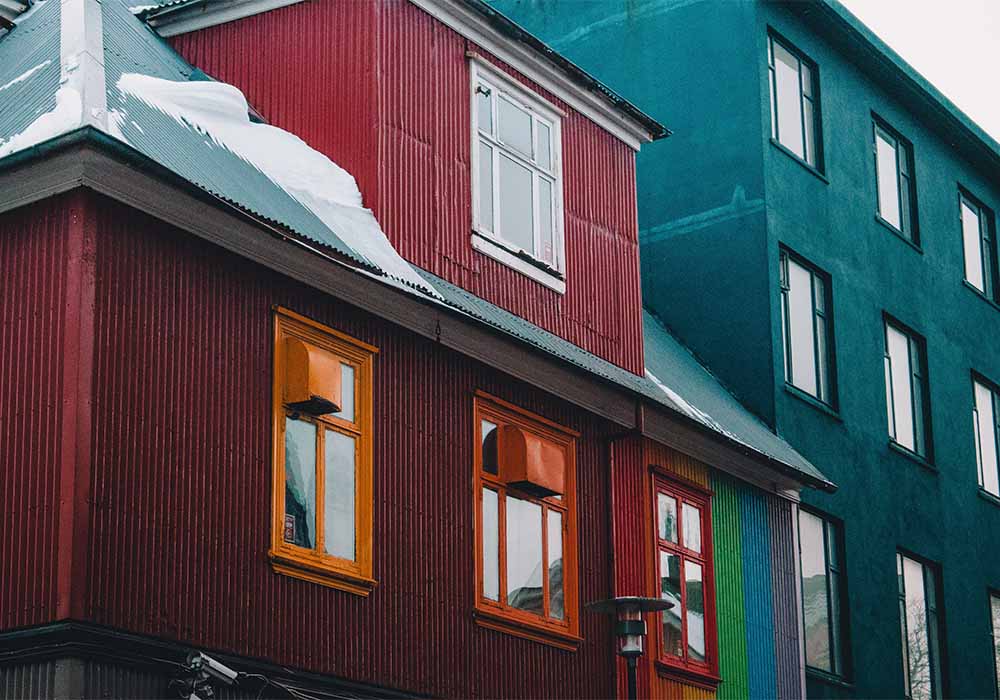
The Icelandic pride can be appreciated in the streets, in plaques and monoliths that show how important men and women of the country -and also legendary facts- are treated. The awareness of its idiosyncrasy seems to go hand in hand with the bridges extended to many other countries. There are a multitude of historical reasons that explain the unique, authentic Anglo-Saxon -British and American- and Nordic blend that one can perceive in Reykjavík. The continental mixture is reflected in wines: in the State shops -the Vinbudín- you can play to buy either a Californian or an Argentine wine, or perhaps better a Riesling or a Bordeaux. Icelandic and English languages are commonly used, and although the currency is the crown, paying with card is available everywhere, so no need to struggle. Once again, they make it easy.
Reykjavík’s space and weather challenges meet at every corner. A pub named “English Pub” in the center of the city would be, at another latitude, a vulgar appeal for herds of tourists. Here, instead, it is such an elegant pub. A free Bach concert in the Reykjavík cathedral would look like a deceptive strategy, that does not match the expectations. Here it is an act of love by a pianist who has played for years, every Tuesday, Bach’s Preludes in order to reach the highest level of perfection. Let’s stop by, for a moment, at this church. Although it is, officially, the cathedral of the city, its dimensions are small. On a blue roof, it seems to come out of a Christmas tale, very close to the Parliament -also shrunk, apparently- and the City Hall, a gray mass that, due to its longing for modernity, is almost frightening. In front of the City Hall, there is the huge lake, frozen at the beginning of March, surrounded by magnificent houses, with families of ducks that slid down to approach the river.
 Another example of challenge: public swimming pools, outdoors, with geothermal water and some hot pot almost boiling, which are part of Reykjavík citizens’ habits. Going to a bath at six or thirty in the afternoon is like going for a beer. If one wishes to quietness, a bath in the morning is ideal -just affected, from the distance, by school courses. Baths and temperature-contrasts restore body and spirit to a placid weightlessness, preparing oneself for the wind, the cold and meals and beers that may wish to taste. Pub life is understood as pleasant thanks to the familiarity that one can breathe there. And food is usually a harmless thing: in the grocery store or in the restaurant you can find some salmon and cod that lengthen that voluptuous bath experience. The port still shows a modest and dazzling aspect, that could suddenly be reversed due to urban voracity. Walking there and going to a restaurant to taste a flamed fish or a very tender horse is unbeatable. And, also, to get close to the part of the harbor that does not seem made to be visited and hang out in the residential neighborhoods -Verstubær or Gandar, with the catholic church nearby Tungata, and a spacious park-, feeds the impression to be stepping on a specific part of the world, an unknown extreme of it.
Another example of challenge: public swimming pools, outdoors, with geothermal water and some hot pot almost boiling, which are part of Reykjavík citizens’ habits. Going to a bath at six or thirty in the afternoon is like going for a beer. If one wishes to quietness, a bath in the morning is ideal -just affected, from the distance, by school courses. Baths and temperature-contrasts restore body and spirit to a placid weightlessness, preparing oneself for the wind, the cold and meals and beers that may wish to taste. Pub life is understood as pleasant thanks to the familiarity that one can breathe there. And food is usually a harmless thing: in the grocery store or in the restaurant you can find some salmon and cod that lengthen that voluptuous bath experience. The port still shows a modest and dazzling aspect, that could suddenly be reversed due to urban voracity. Walking there and going to a restaurant to taste a flamed fish or a very tender horse is unbeatable. And, also, to get close to the part of the harbor that does not seem made to be visited and hang out in the residential neighborhoods -Verstubær or Gandar, with the catholic church nearby Tungata, and a spacious park-, feeds the impression to be stepping on a specific part of the world, an unknown extreme of it.
In Reykjavík, the whole picture is hardly the one that is seen at first glance. Even the Northern Lights are difficult to watch. That much geothermal activity forcefully seems to point out a certain underground effervescence, a kind of telluric temper. Maybe this is the magic and the definitive challenge that the country proposes. Maybe it’s just a reflection of the stories of trolls that cover the social imagery, as well as exhibitions and souvenirs. Embedded as they are in everyday life, in the end you’ll swear that you have seen them too, the trolls.

